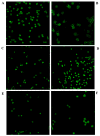Phenol-Rich Feijoa sellowiana (Pineapple Guava) Extracts Protect Human Red Blood Cells from Mercury-Induced Cellular Toxicity
- PMID: 31336755
- PMCID: PMC6680458
- DOI: 10.3390/antiox8070220
Phenol-Rich Feijoa sellowiana (Pineapple Guava) Extracts Protect Human Red Blood Cells from Mercury-Induced Cellular Toxicity
Abstract
Plant polyphenols, with broadly known antioxidant properties, represent very effective agents against environmental oxidative stressors, including mercury. This heavy metal irreversibly binds thiol groups, sequestering endogenous antioxidants, such as glutathione. Increased incidence of food-derived mercury is cause for concern, given the many severe downstream effects, ranging from kidney to cardiovascular diseases. Therefore, the possible beneficial properties of Feijoa sellowiana against mercury toxicity were tested using intact human red blood cells (RBC) incubated in the presence of HgCl2. Here, we show that phenol-rich (10-200 µg/mL) extracts from the Feijoa sellowiana fruit potently protect against mercury-induced toxicity and oxidative stress. Peel and pulp extracts are both able to counteract the oxidative stress and thiol decrease induced in RBC by mercury treatment. Nonetheless, the peel extract had a greater protective effect compared to the pulp, although to a different extent for the different markers analyzed, which is at least partially due to the greater proportion and diversity of polyphenols in the peel. Furthermore, Fejioa sellowiana extracts also prevent mercury-induced morphological changes, which are known to enhance the pro-coagulant activity of these cells. These novel findings provide biochemical bases for the pharmacological use of Fejioa sellowiana-based functional foods in preventing and combating mercury-related illnesses.
Keywords: feijoa extracts; functional food; glutathione; mercury; oxidative stress; red blood cells; thiol groups.
Conflict of interest statement
The authors declare no conflict of interest.
Figures







References
-
- Sharpe R.H., Sherman W.B., Miller E.P. Feijoa history and improvement. Proc. Fla. State Hort. Soc. 1996;106:134–139.
-
- Weston R.J. Bioactive products from fruit of the feijoa (Feijoa sellowiana, Myrtaceae): A review. Food Chem. 2010;121:923–926. doi: 10.1016/j.foodchem.2010.01.047. - DOI
-
- Zhu F. Chemical and biological properties of feijoa (Acca sellowiana) Trends Food Sci. Technol. 2018;81:121–131. doi: 10.1016/j.tifs.2018.09.008. - DOI
-
- Ferrara L., Montesano D. Nutritional characteristics of Feijoa sellowiana fruit. The iodine content. Riv. Di Sci. Dell Aliment. (Italy) 2001;30:353–356.
LinkOut - more resources
Full Text Sources

